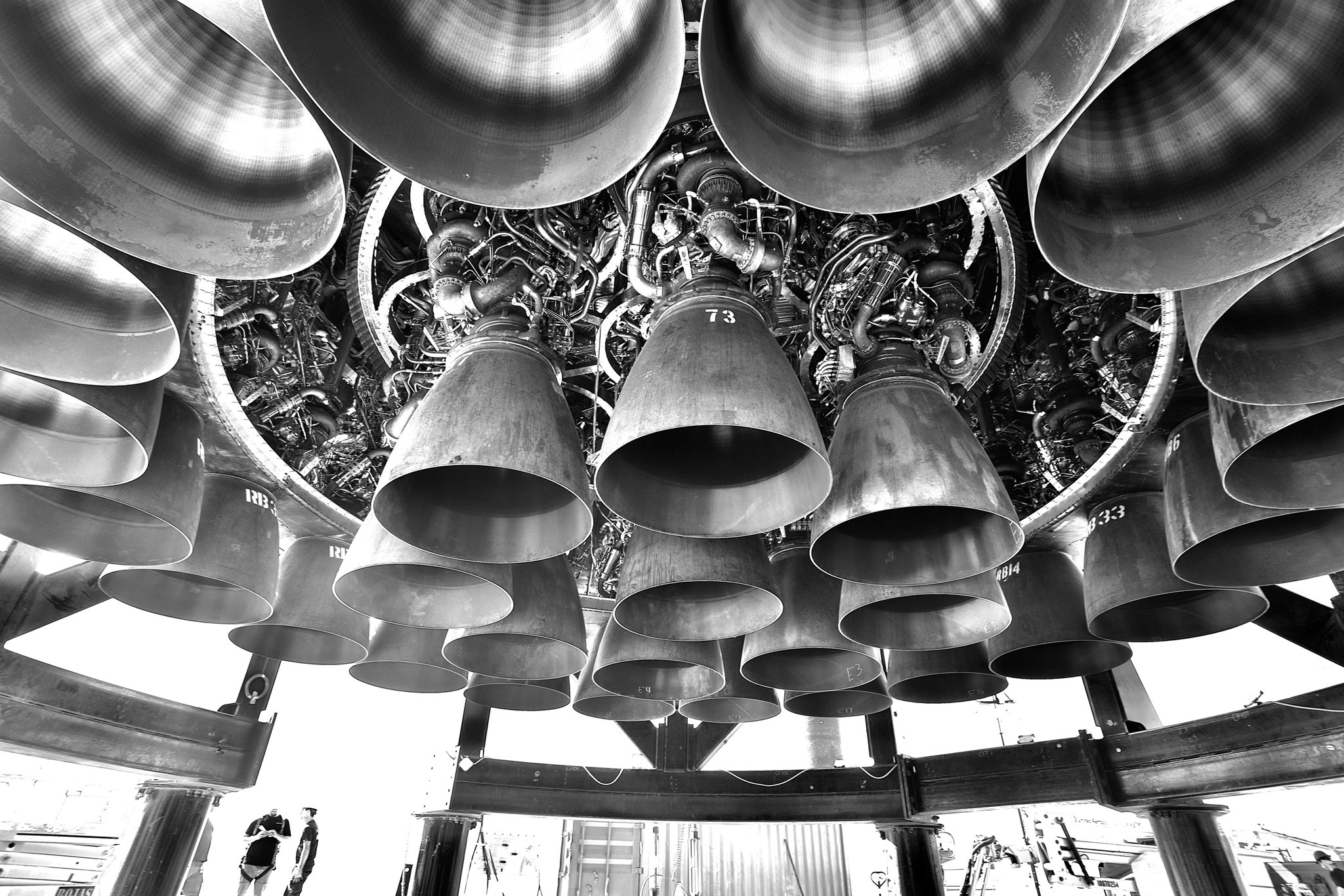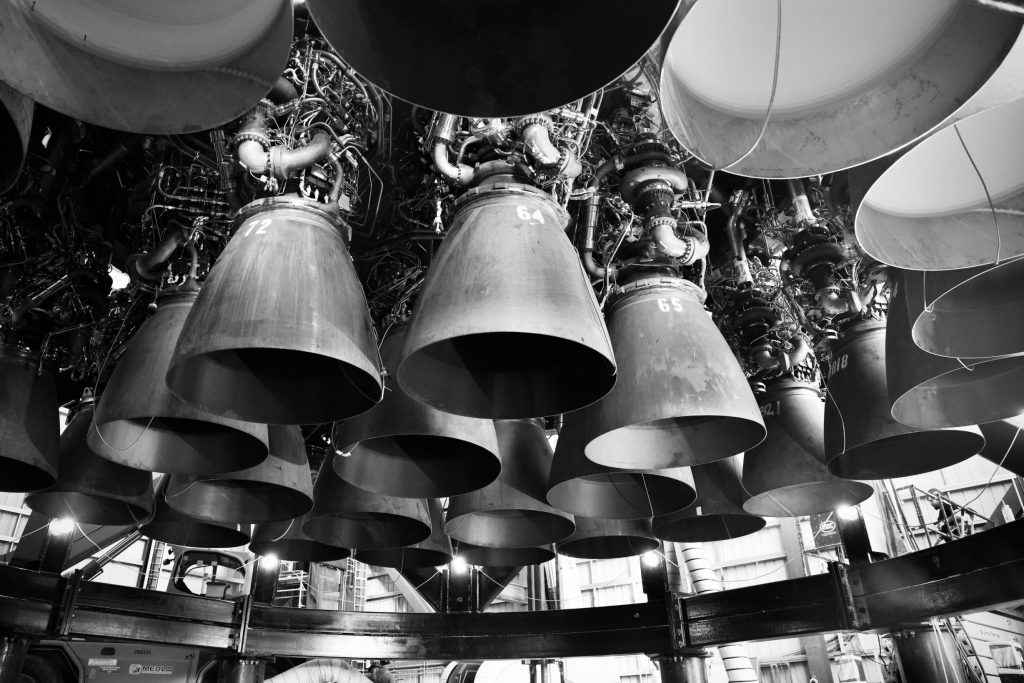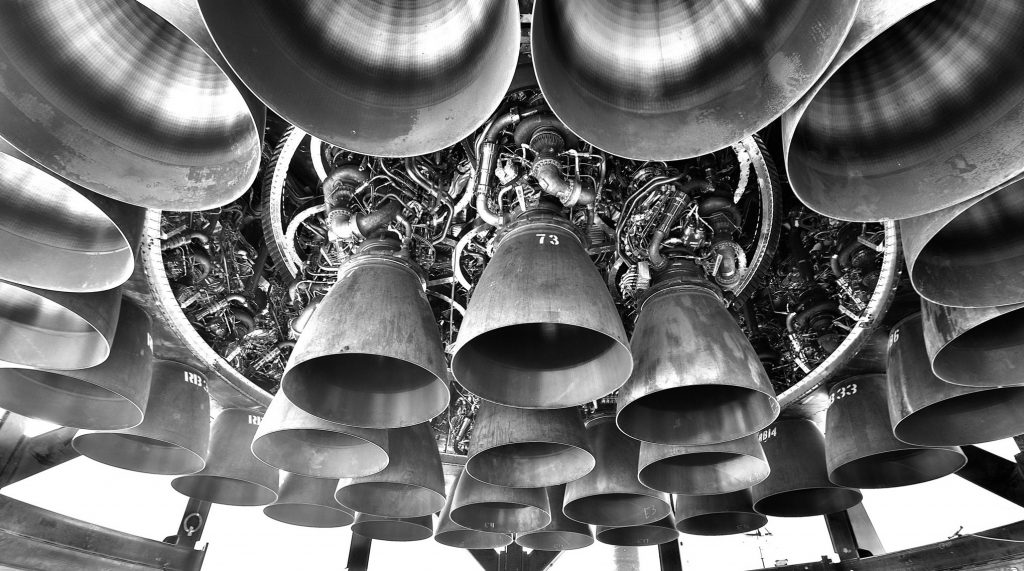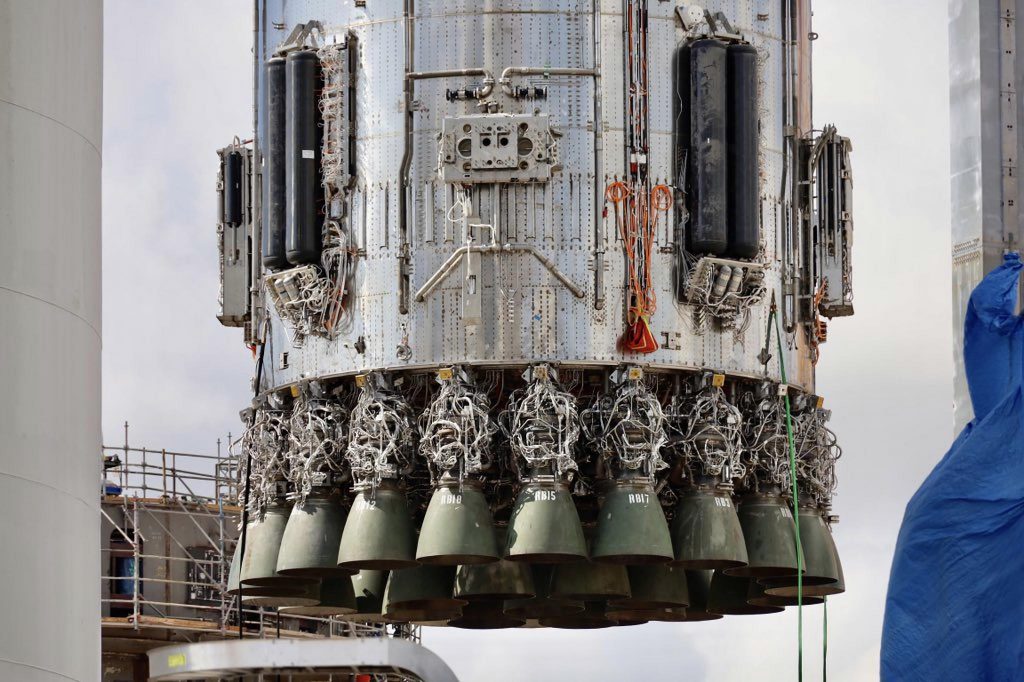

News
SpaceX’s first two Super Heavy boosters making good progress towards test debuts
SpaceX is making good progress on Starship’s first two Super Heavy boosters, both of which could potentially be ready for their first major test campaigns before the end of the year.
On November 19th, some ten weeks after the process began, SpaceX craned Super Heavy B5’s methane (LCH4) tank on top of its oxygen (LOx) tank, marking the end of major structural assembly for the 69m (~225′) tall booster. A team of welders has since been working around the clock to weld the two tanks together and complete a transfer tube that routes methane propellant down through B5’s oxygen tank.
Two days prior, CEO Elon Musk shared a photo of SpaceX’s other Super Heavy booster (B4) which has been slowly progressing towards test readiness for more than three months. It’s unclear why SpaceX has been so sluggish to prepare Super Heavy B4 for testing but with B5 finally approaching the finish line, the company will soon find itself in a position where it will need to decide which booster to proceed with towards the program’s near-term end goal: the first orbital Starship test flight.
Once Booster 5’s two halves are welded together, only a few things will set it and Booster 4 apart. In recent weeks, SpaceX’s slow progress on Super Heavy B4 relented a bit as technicians began closing out the booster’s raceway (a conduit for plumbing, wiring, and avionics) with basic covers. More importantly, SpaceX also began reinstalling Raptor engines and installing heat shielding around those engines for the first time. In the photo Musk published on November 17th, that heat shield is easily visible and there are signs that it will ultimately enclose the entire outer ring of 20 Raptor Boost engines above their nozzles.
Once complete, that shield will theoretically protect each engine’s nest of sensitive plumbing and wiring during static fires; ascent, boostback, and landing burns; and – most importantly – reentry. Unlike Falcon boosters, which always perform a ~30-second, three-engine ‘reentry burn’ to slow down and cushion the blow of reentry heating, SpaceX plans to recover steel Super Heavy boosters without reentry burns. In theory, that should making booster recovery more efficient, allowing another dozen or so tons of propellant to go towards sending Starship to orbit instead of landing.


As of November 17th, SpaceX has reinstalled all 29 Raptor engines on Booster 4, partially finished the outer ring of Raptor heat shields, and set the stage for more heat shielding around its 9 center engines and the gap between those inner and outer Raptors. Shielding the Raptor Center engines in a way that still seals off Super Heavy’s aft will be even more challenging given that all nine need to be able to freely gimbal to vector their thrust, while the outer ring of 20 Raptor Boost (RB) engines are fixed in place. At pace of work established over the last few months, it will likely take SpaceX several more weeks to finish that heat shield and install seven ‘aerocovers’ over racks of sensitive equipment installed around Booster 4’s base.

Super Heavy Booster 5, on the other hand, has taken a slightly different path through assembly. Unlike Booster 4, which first rolled out as little more than a giant steel tank with Raptors half-installed, SpaceX appears to have installed most of Booster 5’s external plumbing, wiring, equipment racks, and maybe even the start of its Raptor heat shield during assembly instead of after. Perhaps as a result, SpaceX has taken more than ten weeks to stack Booster 5 versus 2.5 weeks for Booster 4. But given that Booster 4 still doesn’t appear to be complete some 18 weeks after its assembly began, there’s a chance that Booster 5 will ultimately take 4-6 weeks less to reach initial test readiness.
If SpaceX does complete Super Heavy B5 well ahead of B4’s schedule, it will soon find itself with two test-ready Starship boosters but only one orbital-class stand with which to test them, potentially forcing the company to make some interesting decisions.
Elon Musk
Tesla reveals it is using AI to make factories more sustainable: here’s how
Tesla is using AI in its Gigafactory Nevada factory to improve HVAC efficiency.

Tesla has revealed in its Extended Impact Report for 2024 that it is using Artificial Intelligence (AI) to enable its factories to be more sustainable. One example it used was its achievement of managing “the majority of the HVAC infrastructure at Gigafactory Nevada is now AI-controlled” last year.
In a commitment to becoming more efficient and making its production as eco-friendly as possible, Tesla has been working for years to find solutions to reduce energy consumption in its factories.
For example, in 2023, Tesla implemented optimization controls in the plastics and paint shops located at Gigafactory Texas, which increased the efficiency of natural gas consumption. Tesla plans to phase out natural gas use across its factories eventually, but for now, it prioritizes work to reduce emissions from that energy source specifically.
It also uses Hygrometric Control Logic for Air Handling Units at Giafactory Berlin, resulting in 17,000 MWh in energy savings each year. At Gigafactory Nevada, Tesla saves 9.5 GWh of energy through the use of N-Methylpyrrolidone refineries when extracting critical raw material.
Perhaps the most interesting way Tesla is conserving energy is through the use of AI at Gigafactory Nevada, as it describes its use of AI to reduce energy demand:
“In 2023, AI Control for HVAC was expanded from Nevada and Texas to now include our Berlin-Brandenburg and Fremont factories. AI Control policy enables HVAC systems within each factory to work together to process sensor data, model factory dynamics, and apply control actions that safely minimize the energy required to support production. In 2024, this system achieved two milestones: the majority of HVAC infrastructure at Gigafactory Nevada is now AI-controlled, reducing fan and thermal energy demand; and the AI algorithm was extended to manage entire chiller plants, creating a closed-loop control system that optimizes both chilled water consumption and the energy required for its generation, all while maintaining factory conditions.”
Tesla utilizes AI Control “primarily on systems that heat or cool critical factory production spaces and equipment.” AI Control communicates with the preexisting standard control logic of each system, and any issues can be resolved by quickly reverting back to standard control. There were none in 2024.
Tesla says that it is utilizing AI to drive impact at its factories, and it has proven to be a valuable tool in reducing energy consumption at one of its facilities.
Elon Musk
Tesla analysts believe Musk and Trump feud will pass
Tesla CEO Elon Musk and U.S. President Donald Trump’s feud shall pass, several bulls say.

Tesla analysts are breaking down the current feud between CEO Elon Musk and U.S. President Donald Trump, as the two continue to disagree on the “Big Beautiful Bill” and its impact on the country’s national debt.
Musk, who headed the Department of Government Efficiency (DOGE) under the Trump Administration, left his post in May. Soon thereafter, he and President Trump entered a very public and verbal disagreement, where things turned sour. They reconciled to an extent, and things seemed to be in the past.
However, the second disagreement between the two started on Monday, as Musk continued to push back on the “Big Beautiful Bill” that the Trump administration is attempting to sign into law. It would, by Musk’s estimation, increase spending and reverse the work DOGE did to trim the deficit.
Every member of Congress who campaigned on reducing government spending and then immediately voted for the biggest debt increase in history should hang their head in shame!
And they will lose their primary next year if it is the last thing I do on this Earth.
— Elon Musk (@elonmusk) June 30, 2025
President Trump has hinted that DOGE could be “the monster” that “eats Elon,” threatening to end the subsidies that SpaceX and Tesla receive. Musk has not been opposed to ending government subsidies for companies, including his own, as long as they are all abolished.
How Tesla could benefit from the ‘Big Beautiful Bill’ that axes EV subsidies
Despite this contentious back-and-forth between the two, analysts are sharing their opinions now, and a few of the more bullish Tesla observers are convinced that this feud will pass, Trump and Musk will resolve their differences as they have before, and things will return to normal.
ARK Invest’s Cathie Wood said this morning that the feud between Musk and Trump is another example of “this too shall pass:”
BREAKING: CATHIE WOOD SAYS — ELON AND TRUMP FEUD “WILL PASS” 👀 $TSLA
She remains bullish ! pic.twitter.com/w5rW2gfCkx
— TheSonOfWalkley (@TheSonOfWalkley) July 1, 2025
Additionally, Wedbush’s Dan Ives, in a note to investors this morning, said that the situation “will settle:”
“We believe this situation will settle and at the end of the day Musk needs Trump and Trump needs Musk given the AI Arms Race going on between the US and China. The jabs between Musk and Trump will continue as the Budget rolls through Congress but Tesla investors want Musk to focus on driving Tesla and stop this political angle…which has turned into a life of its own in a roller coaster ride since the November elections.”
Tesla shares are down about 5 percent at 3:10 p.m. on the East Coast.
Elon Musk
Tesla scrambles after Musk sidekick exit, CEO takes over sales
Tesla CEO Elon Musk is reportedly overseeing sales in North America and Europe, Bloomberg reports.

Tesla scrambled its executives around following the exit of CEO Elon Musk’s sidekick last week, Omead Afshar. Afshar was relieved of his duties as Head of Sales for both North America and Europe.
Bloomberg is reporting that Musk is now overseeing both regions for sales, according to sources familiar with the matter. Afshar left the company last week, likely due to slow sales in both markets, ending a seven-year term with the electric automaker.
Tesla’s Omead Afshar, known as Elon Musk’s right-hand man, leaves company: reports
Afshar was promoted to the role late last year as Musk was becoming more involved in the road to the White House with President Donald Trump.
Afshar, whose LinkedIn account stated he was working within the “Office of the CEO,” was known as Musk’s right-hand man for years.
Additionally, Tom Zhu, currently the Senior Vice President of Automotive at Tesla, will oversee sales in Asia, according to the report.
It is a scramble by Tesla to get the company’s proven executives over the pain points the automaker has found halfway through the year. Sales are looking to be close to the 1.8 million vehicles the company delivered in both of the past two years.
Tesla is pivoting to pay more attention to the struggling automotive sales that it has felt over the past six months. Although it is still performing well and is the best-selling EV maker by a long way, it is struggling to find growth despite redesigning its vehicles and launching new tech and improvements within them.
The company is also looking to focus more on its deployment of autonomous tech, especially as it recently launched its Robotaxi platform in Austin just over a week ago.
However, while this is the long-term catalyst for Tesla, sales still need some work, and it appears the company’s strategy is to put its biggest guns on its biggest problems.
-

 Elon Musk1 day ago
Elon Musk1 day agoTesla investors will be shocked by Jim Cramer’s latest assessment
-

 News7 days ago
News7 days agoTesla Robotaxi’s biggest challenge seems to be this one thing
-

 News2 weeks ago
News2 weeks agoTesla’s Grok integration will be more realistic with this cool feature
-

 Elon Musk2 weeks ago
Elon Musk2 weeks agoElon Musk slams Bloomberg’s shocking xAI cash burn claims
-

 News2 weeks ago
News2 weeks agoTesla China roars back with highest vehicle registrations this Q2 so far
-

 News2 weeks ago
News2 weeks agoTexas lawmakers urge Tesla to delay Austin robotaxi launch to September
-

 News2 weeks ago
News2 weeks agoTesla dominates Cars.com’s Made in America Index with clean sweep
-

 Elon Musk1 week ago
Elon Musk1 week agoFirst Look at Tesla’s Robotaxi App: features, design, and more




















